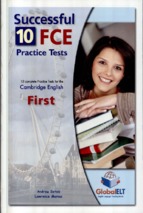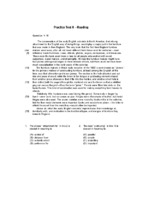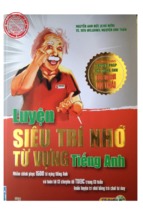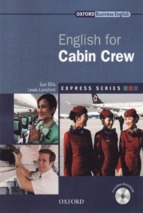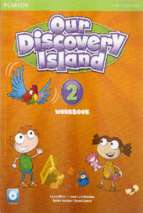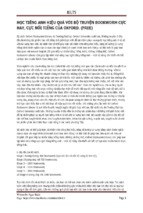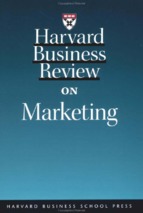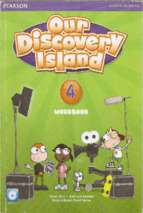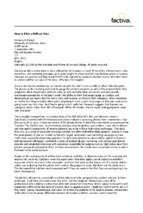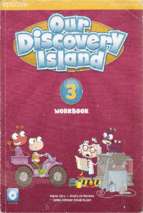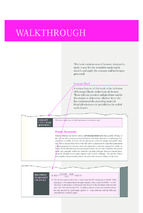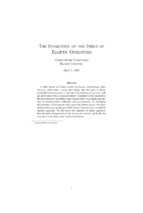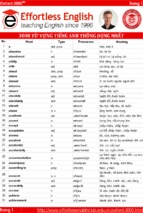From Projects
to Programs
A Project Manager’s Journey
Samir Penkar, PMP, CSM
Best Practices and Advances in Program Management Series
From Projects
to Programs
A Project Manager’s Journey
Best Practices and Advances
in Program Management Series
Series Editor
Ginger Levin
PUBLISHED TITLES
From Projects to Programs: A Project Manager’s Journey
Samir Penkar
Sustainable Program Management
Gregory T. Haugan
Leading Virtual Project Teams: Adapting Leadership Theories
and Communications Techniques to 21st Century Organizations
Margaret R. Lee
Applying Guiding Principles of Effective Program Delivery
Kerry R. Wills
Construction Program Management
Joseph Delaney
Implementing Program Management: Templates and Forms Aligned
with the Standard for Program Management,
Third Edition (2013) and Other Best Practices
Ginger Levin and Allen R. Green
Program Management: A Life Cycle Approach
Ginger Levin
FORTHCOMING TITLES
Successful Program Management:
Complexity Theory, Communication, and Leadership
Wanda Curlee and Robert Lee Gordon
Program Management Leadership: Creating Successful Team Dynamics
Mark C. Bojeun
The Essential Program Management Office
Gary Hamilton
From Projects
to Programs
A Project Manager’s Journey
Samir Penkar, PMP, CSM
CRC Press
Taylor & Francis Group
6000 Broken Sound Parkway NW, Suite 300
Boca Raton, FL 33487-2742
© 2014 by Taylor & Francis Group, LLC
CRC Press is an imprint of Taylor & Francis Group, an Informa business
No claim to original U.S. Government works
Version Date: 20130507
International Standard Book Number-13: 978-1-4665-9182-0 (eBook - PDF)
This book contains information obtained from authentic and highly regarded sources. Reasonable efforts
have been made to publish reliable data and information, but the author and publisher cannot assume
responsibility for the validity of all materials or the consequences of their use. The authors and publishers
have attempted to trace the copyright holders of all material reproduced in this publication and apologize to
copyright holders if permission to publish in this form has not been obtained. If any copyright material has
not been acknowledged please write and let us know so we may rectify in any future reprint.
Except as permitted under U.S. Copyright Law, no part of this book may be reprinted, reproduced, transmitted, or utilized in any form by any electronic, mechanical, or other means, now known or hereafter invented,
including photocopying, microfilming, and recording, or in any information storage or retrieval system,
without written permission from the publishers.
For permission to photocopy or use material electronically from this work, please access www.copyright.
com (http://www.copyright.com/) or contact the Copyright Clearance Center, Inc. (CCC), 222 Rosewood
Drive, Danvers, MA 01923, 978-750-8400. CCC is a not-for-profit organization that provides licenses and
registration for a variety of users. For organizations that have been granted a photocopy license by the CCC,
a separate system of payment has been arranged.
Trademark Notice: Product or corporate names may be trademarks or registered trademarks, and are used
only for identification and explanation without intent to infringe.
Visit the Taylor & Francis Web site at
http://www.taylorandfrancis.com
and the CRC Press Web site at
http://www.crcpress.com
Contents
Preface....................................................................................................vii
Acknowledgments..................................................................................ix
About the Author....................................................................................xi
Cast of Characters............................................................................... xiii
Chapter 1 The Birth of My First Program.......................................... 1
Reflections.....................................................................................6
Chapter 2 What Is It Really I Do?....................................................... 7
Reflections...................................................................................19
Chapter 3 Program Roadmap............................................................ 21
Reflections...................................................................................26
Chapter 4 Estimates and Program Financials.................................. 29
Reflections...................................................................................36
Chapter 5 Why Do It? Benefits, Benefits, Benefits........................... 37
Reflections.................................................................................. 42
Chapter 6 The Prosperity Game for Governance............................. 43
Reflections...................................................................................49
Chapter 7 Program Integration Challenges...................................... 51
Reflections...................................................................................58
Chapter 8 The Long Implementation Phase..................................... 59
Reflections...................................................................................70
v
vi • Contents
Chapter 9 Benefits Management........................................................ 71
Reflections...................................................................................74
Chapter 10 The Fruits of Growth........................................................ 75
Reflections...................................................................................76
Glossary.................................................................................................. 77
Appendix 1............................................................................................. 79
Appendix 2............................................................................................. 85
Appendix 3............................................................................................. 97
Appendix 4............................................................................................. 99
Appendix 5........................................................................................... 119
Selected Bibliography.......................................................................... 135
Preface
This is a story about a project manager growing into a program manager’s shoes. It is a chronicle of a program manager’s first program—her
growth, struggles, and wins as she navigates this complex area. It is in
the form of a story, told from the program manager’s point of view. I did
this because I have found that people relate better to stories; they can
connect to the concepts in a better way and then relate it back to their
own situations.
Whatever your goal, whether it be moving up the project management
career ladder, understanding program management, or just looking for
a refreshing business book, I hope From Project to Programs: A Project
Manager’s Journey can help you with your journey. Written in a conversational tone, you will gain insights into the mind of a program manager,
a peek into her personal life, and how work and life are so intertwined.
Throughout this story, you will see yourself somewhere in these pages.
Pause, stop, and ponder on the reflection questions at the end of each
chapter. Think what you would have done in this situation. This is not an
attempt to be a comprehensive guide to program management, but rather
an attempt to distill some of the core areas of program management.
You will see my love for running, visual thinking, and music in these
pages. This book is a journey into the future, and a journey of progress. I
hope and trust you enjoy it as much as I have enjoyed writing it.
vii
Acknowledgments
To Aie, Papa, Amita, and my little Manas
Writing a book is such a joy and challenge at the same time. You see
your creation come to life and realize it takes more than you to create
it. It takes the loving support of family. A big thank you to Amita, my
dear wife, who supported me through this journey. This book would not
have seen the light of day without her unwavering support. Thank you,
little Manas—my six-year-old son—for being my inspiration.
I offer my sincere gratitude to Dr. Ginger Levin, for her expert direction
and advice on this book. I remember my first call with Ginger, sitting in
my car in a parking lot over lunch. Ginger not only helped me get introduced to the Taylor & Francis Group, my publishers, but she was a constant
source of support, guidance, and encouragement as I wrote this book.
Many thanks to everyone at Taylor & Francis Group for believing in me
and bringing this to life.
And, finally, I would like to sincerely thank Brian Grafsgaard and Krissy
Wolle for allowing me to interview them. The expert interviews that you
see in this book are a result of them sharing their experience and knowledge. Thank you, Brian, and thank you, Krissy.
ix
About the Author
Samir Penkar is an award-winning
program and project management
professional.
He is the founder of the Future of
Project Management blog, the place
for people, trends, and ideas on project management. Penkar has been
featured in The Wall Street Journal,
Fox 9 News, and numerous project
management publications. A passionate speaker, he has presented internationally across the United States, Asia,
Canada, and Africa.
Penkar has a Bachelor of Engineering in Electronics and a MBA from
Mumbai University in India. He is a certified Project Management
Professional (PMP) as well as a certified Scrum Master.
As a consultant, he has worked with a number of organizations in the
education, insurance, fitness, manufacturing, and agro industries.
xi
Cast of Characters
Susan Codwell: Project manager promoted to program manager
Derek Codwell: Susan’s five-year-old son
Andy Codwell: Susan’s husband
Monica Friedman: Attorney and a mother of two, Susan’s running buddy
Steve Meyer: Musician, Susan’s second running buddy
Arthur Russel: PMO director
Antonio Zubrod: CEO of FitAtWork Inc.
Murali Krishnan: Project manager
Barbara Taylor: Project manager
Harvey Larson: Technical architect
Bill Holtz: Senior business analyst
Paul Landers: Chief financial officer
Mary Beth Jensen: Vice president of National Delivery
Ronald Weinberg: Vice president of Sales
Fran Straus: Legal counsel
Disclaimer: This is a work of fiction. Names, characters, places, and incidents either are products of the author’s imagination or are used fictitiously. Any resemblance to actual events or locales or persons, living or
dead, is entirely coincidental.
xiii
1
The Birth of My First Program
My legs are failing, as I am trying to keep up with my running buddies,
Monica Friedman and Steve Meyer. “Come on, Susan Codwell, you can
do it,” I am saying to myself. It’s a crisp Saturday morning, and the
three of us are on our usual trail run. This 10-mile trail takes us to the
edge of Lake Reiley, into the woods, and past the Bear Lakes Country
Golf Club.
For some reason, I cannot find my running stride today. My mind
drifts to the previous day to the program review meeting with the Project
Management Office (PMO) leadership. First, why would anyone schedule
a critical program review at 3:30 p.m. on a Friday afternoon? A panel of
stern-looking sponsors, managers, and our PMO director, Arthur Russell,
are leading the charge. Arthur was my biggest fan, so I thought, but at this
meeting, he seemed like my worst enemy, ready to pounce on every point
I made and my attempts at trying to explain how we can get out of this
program mess.
“Hey, look at that dog,” shouts out Steve over his back. A happy black
Labrador is hurling himself into the lake, hustling to reach the rubber
bunny that his master had flung into the water. As I peek a glance sidewise,
I lose my step and fall head long into the bushes.
“Oh my God, are you all right?” Monica immediately turns back. Steve
is a little farther away before he realizes I have fallen. He comes rushing
to my side.
“I am okay,” I blurt out, brushing off the dust and leaves from my T-shirt.
“What happened? You seem very distracted today,” Steve asks.
I am still sitting on the edge of the trail, and Monica hands me her water
bottle. I take a few sips. “It’s nothing really; maybe I did not get a good
night’s sleep, guys,” I say, as I pick myself up. Luckily, no damage is done,
except for a few bruises on my knee and arm.
1
2 • From Projects to Programs
“Let’s turn back, it’s getting warm anyway,” suggests Monica. We trace
our way back through the winding trail; the Labrador is still at his toy,
happily wagging his tail.
The rest of my Saturday is filled with ice skating classes for Derek (my
adorable five-year-old son), grocery shopping, laundry, and cooking. That
leaves no place to think about my troubled program at work. This program
represents a pivotal advance in my career, my chance to move up from a
project manager to a higher plane.
At five o’clock my cell phone buzzes, Monica is calling.
“Hey girl! How are those bruises and are you okay?”
I love Monica’s enthusiasm on the phone. “I’m okay and thanks for calling.” I hesitate a little and continue, “You know, it’s just that my mind
was at work; we have this large program that I am in charge of and we
are having some issues lately. Running was supposed to be my bliss and
getaway, but maybe the work stress got to me in the morning. My arm is
a little bruised, but I am going to be fine by next Saturday. I so appreciate
your call, Monica.”
“Hey girl, when you run, just focus on the trail and your breathing,
everything else will dissolve. Well, good luck with your program, and see
you Saturday then,” Monica says as she clicks off.
Monica Friedman, Steve Meyer, and I met at my first marathon training program. We instantly bonded and for the past two years we have this
Saturday morning run ritual. I really enjoyed the company of these two.
Monica is a 34-year-old attorney, a mother of two, who still thinks partying until 4 a.m. is the best girl’s night out ever. Steve Meyer is a musician;
he plays the violin for the local orchestra. Even with his late night shows,
Steve has rarely missed any of our Saturday morning runs. I admire Steve
for following his passion of music and making it his career. Arguably one
of the best artists I know, on his running T-shirt, Steve has a pepper blackcolored logo studded with gold trims and a soothing green outline that he
painted himself. It says: Running is Musical.
My mind drifts back to the meeting with the PMO leadership on Friday.
Arthur began the meeting with some small talk about the weekend and
then he abruptly announced that we may have major issues with the Fast
Track Proposal Program. My company, FitAtWork Inc., started out as a
corporate wellness program offering. We have branched out into consumer-driven and an entire array of wellness initiatives for organizations.
We have a battery of health coaches, fitness instructors, and even doctors on the payroll. With a nationwide network of nurses, we conduct
The Birth of My First Program • 3
biometrics clinics at employer locations, design, and deliver wellness programs. A technology-heavy company, we have a range of online customerfacing portals, social media outreach, and smartphone apps in addition
to the administrative systems that drive the internal operations. As the
company has grown, we have struggled to keep up with the legacy systems, the mergers and acquisitions, and the ever-increasing demand from
marketing for faster deployment of newer mobile technologies. It would
be hard for someone in our company to feel like we are in the midst of an
economic recession.
In my brief three years with the company, I have been promoted
twice—once from a junior project manager to senior project manager
and recently to a program manager. I remember walking into Arthur
Russell’s office for my final interview and was blown away with his
office wall lined with medals from his numerous marathons, and photos of his triathlons and skiing trips. We had a great conversation and
Arthur called me personally that same evening and offered me the job.
I took it.
I am a solid project manager and quickly gained Arthur’s trust. The very
next year, he promoted me to a senior project manager. When the company
began to contemplate this Fast Track Proposal Program, I volunteered to
lead it, with a knot in my stomach. In the corporate wellness industry,
every major corporation was installing a wellness program. The volume
of Request for Proposals (RFPs) was intimidating. We could respond to
only 40% of the proposal requests that we received. There was a shortage of
subject matter experts, every proposal effort was a one-off effort (limited
to a single time). Proposal assets were not centrally located and were difficult to obtain. And, the biggest challenge was interdepartmental coordination of sales for customer interactions, marketing for messaging, legal,
Information Technology, health coaches, and support teams. The vision
was to build a proposal management workflow system and content repository that would dramatically speed up the proposal creation process. This
was a key factor hurting the company’s growth.
If I could pull off this program, Arthur had promised a great career path
for me. He even sent me to a two-day program management workshop. I
had all the theory down, but never had I managed such a large initiative. My
interest for program management started as a purely intellectual exercise,
but was soon propelled toward a more pragmatic and now a real program.
“It’s just a large project, manage it like any other project” is what I told
myself. However, the skills I would need to manage this program were far
4 • From Projects to Programs
more complex than anything I had ever imagined. Little did I know that
when I requested that Arthur make me the program manager.
Similar to witnessing a baby arrive in this world, I had seen the Fast
Track Proposal Program take birth. Its conception lay in the active brain
of our CEO, Antonio Zubrod. Through its pregnancy, it was nurtured by
a number of our steering committee members. It took Antonio a full five
years to actually gather momentum for this start-up company. Recruiting
health coaches and nurses in the initial days was an uphill task.
“To get a health coach to come and work the phones was a difficult thing to
do. Not like taking a client to the gym or teaching them to swim,” he recalls.
The steering committee spent a good three months debating if we should
acquire an off-the-shelf solution or build our own. They decided to land
somewhere in the middle. ToGetherMode Inc. was selected to provide the
collaborative workspace, and then our technical development team would
build the workflow, asset repository, and functions around this workspace.
Arthur Russell himself drafted the initial program charter. At the time, he
thought of this as a large project. There were few departments that did not
in some fashion contribute to the RFPs. It soon became apparent that by
installing a workflow system for RFPs, we would need multiple streams of
work to bring this project to life. Another factor involved the time frame
that we thought this would take. A total disruption of the RFP process was
a scary thought; no one wanted to fall down below the 40% RFPs that we
could respond to currently, yet to take us beyond this 40% response rate,
we would require the same set of subject matter experts. Well, you add the
sales team on top of all this and their time was extremely critical. Selling
a wellness program to a large company is a tedious and long, drawn out
process. At any point of time, a single sales manager would be creating
three to four RPFs. Plus, they also had to meet their quotas and attend
training for new products and services. They also were expected to update
our Customer Relationship Management (CRM) system.
In the course of the year, Arthur Russell updated the initial charter to
include the following points that justified why we need to treat this as a
program, rather than just a project:
1. Duration: Estimated duration for the entire initiative to be rolled out
and the benefits realized was over 16 months.
2. Strategic importance (large scope and many stakeholders): The initiative was of significant importance to the business of the company.
Our expansion plans depended on this program being successful. It
- Xem thêm -

